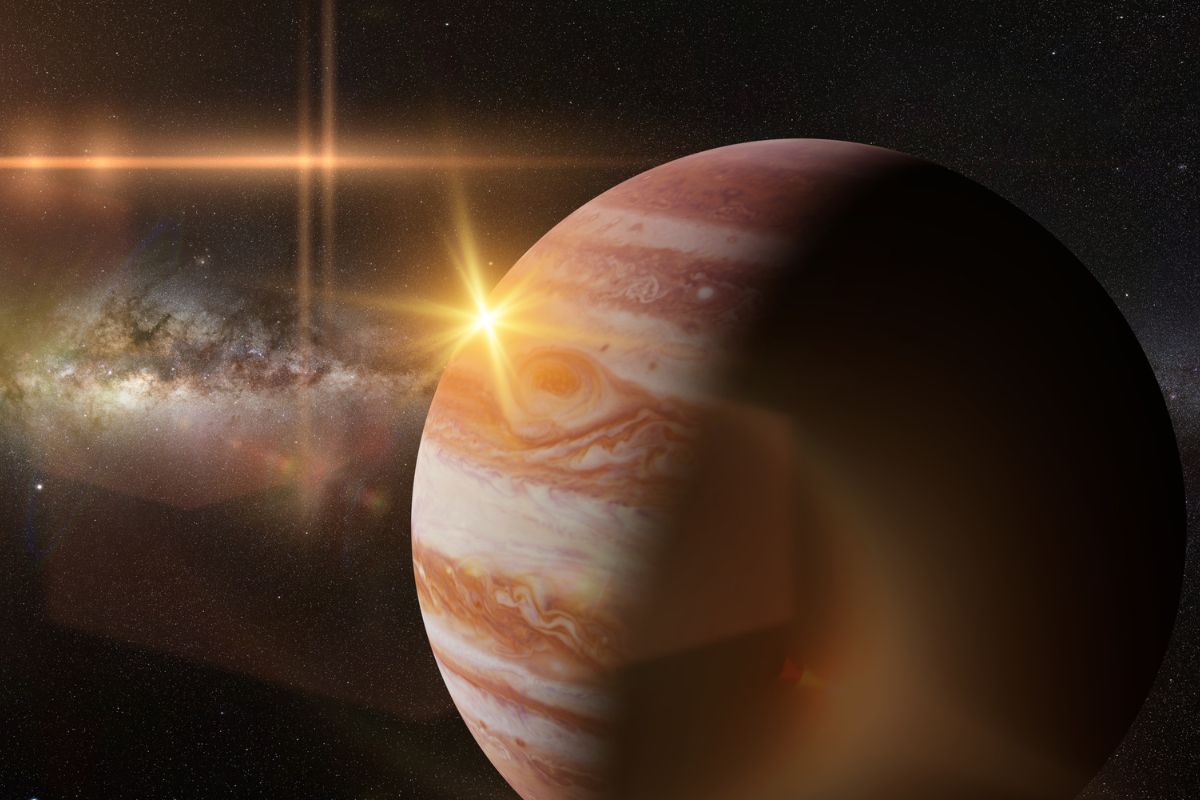New research has unveiled intriguing details about Jupiter’s formative years, suggesting that 4.5 billion years ago, the gas giant was a staggering 2.5 times its current size. This groundbreaking study, published in May 2025, reshapes our understanding of planetary evolution and underscores Jupiter’s key role in shaping the solar system as we know it.
During its early years, Jupiter experienced what scientists refer to as a primordial growth spurt. In the chaotic environment of the early solar system, where newly forming planets vied for limited resources, Jupiter emerged as the dominant force, expanding at an astonishing rate. Researchers Konstantin Batygin and Fred C. Adams calculated that Jupiter gained roughly 2.4 times its current mass per million years during this period.
The rapid growth phase began about 3.8 million years after the formation of the first solid materials in the solar nebula. At this time, Jupiter’s intense internal activity generated a powerful magnetic field, estimated to be fifty times stronger than today’s. This formidable magnetic field played a crucial role in gathering large amounts of gas and dust from its surroundings.
The research aligns with the core accretion model of planetary formation, in which solid cores attract gaseous envelopes. Jupiter’s massive gravitational influence has not only shaped its own system but also established the orbital patterns seen in other planets.
While Jupiter didn’t achieve the mass needed to become a star—requiring 85 times its current size to initiate hydrogen fusion—its growth phase has left profound impacts on our cosmic neighborhood. These remnants now serve as vital data points for astronomers studying planetary formation within our solar system and in distant star systems.
Significantly, the insights about Jupiter’s early size and growth came from an unexpected source: the orbits of its smaller moons, Amalthea and Thebe. These moons, which orbit closer to Jupiter than the more famous Galilean moons, have characteristics that serve as a gravitational fossil record. Batygin and Adams employed this unique data in their analysis, which was published in the journal Nature Astronomy, allowing them to bypass traditional uncertainties in planetary formation models.
Fred Adams commented on the remarkable conservation of information over billions of years, stating, “It’s remarkable that after 4.5 billion years, we can still find clues to reconstruct Jupiter’s physical state at birth.” This enthusiasm mirrors excitement surrounding other recent historical discoveries, including preserved manuscripts that illuminate lost epochs.
The research team uncovered that Jupiter’s initial expansion occurred within a dense circumjovian disk, rich in gas and dust particles. This environment provided the materials necessary for the gas giant’s significant growth. By examining the orbital mechanics of these moons, scientists effectively turned back the cosmic clock to gain insights into conditions that existed eons ago.
Jupiter’s dramatic influence extends beyond its gravitational grasp. Its massive gravitational field played a critical role in shaping planetary orbits, perhaps even establishing conditions for Earth to develop a stable orbit conducive to life. The timing of Jupiter’s formation coincided with the end of the solar nebula, marking a crucial moment in constructing the solar system’s architecture.
The innovative techniques developed in this research could aid astronomers in studying other astronomical phenomena that have recurred after lengthy absences, much like monitoring once-extinct species that reappear. Understanding Jupiter’s early history also helps contextualize gas giants found in exoplanetary research, where we observe a plethora of Jupiter-sized planets in varied orbital configurations.
The implications of this knowledge extend into practical realms as well. Insights into gas giant formation are critical for evaluating the stability of planetary systems and may assist in identifying habitable zones around other stars. Jupiter’s powerful gravitational pull likely protected Earth from excessive comet impacts, fostering a more hospitable environment for life.
Furthermore, Jupiter’s formation serves as a compelling case study in efficiently utilizing resources within a cosmic setting—its ability to rapidly accumulate matter parallels innovative approaches being explored to tackle large-scale environmental challenges on Earth.
As telescope technology evolves and new exoplanetary systems are discovered, this seminal Caltech study demonstrates how present-day observational data can illuminate the dramatic conditions of the past. Jupiter’s journey from a colossal infant to a fully formed planet exemplifies the dynamic evolution of celestial bodies, reinforcing the idea that planets are complex systems with extensive developmental histories that continue to shape their surroundings today.

